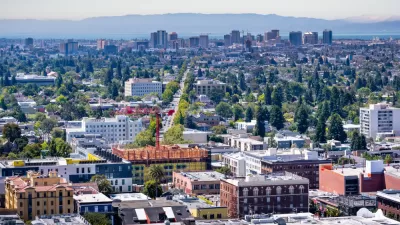Developers, environmentalists, and other experts discussed the challenge of achieving all-electric homes and businesses at VerdeXchange 2019.

At the VerdeXchange 2019 Conference, leaders in real estate, infrastructure, and environmentalism charted a path to reducing carbon emissions from the built environment.
A real-estate perspective was provided by Sara Neff, senior vice president of sustainability at Kilroy Realty Corporation.
"The conversation around all-electric buildings may have been going on for a very long time in the environmental community, but it has only recently come to real estate," Neff said, noting that sustainability commitments from major firms have typically revolved around efficiency. "All-electric buildings seem like a new and crazy thing to us."
Obstacles to more sustainable buildings include flaws in the LEED model that can actually discourage electrification, she said, and the difficulty of tracking the carbon impacts embodied in building materials.
The panel was led by Panama Bartholomy, director of the Building Decarbonization Coalition, which recently released a report advocating zero-emission building codes to help California transition to all-electric buildings.
"In 2018, building decarbonization really hit the public consciousness," Bartholomy told the audience, citing a $200 million program from the California Public Utilities Commission. "In 2019, we’re going to see implementation … We have a big year ahead of us."
Also featured were Russell Fortmeyer of Arup, the global planning and design firm, and Jeff Addison of Subterra Renewables, which equips buildings with geothermal power. Context for the environmental impact of natural gas was provided by Tim O'Connor of the Environmental Defense Fund. Read an edited transcript in The Planning Report or watch the video at Verdexchange.org.
FULL STORY: Decarbonizing the Built Environment: California's Relentless Push Toward Electrification

Alabama: Trump Terminates Settlements for Black Communities Harmed By Raw Sewage
Trump deemed the landmark civil rights agreement “illegal DEI and environmental justice policy.”

Study: Maui’s Plan to Convert Vacation Rentals to Long-Term Housing Could Cause Nearly $1 Billion Economic Loss
The plan would reduce visitor accommodation by 25% resulting in 1,900 jobs lost.

Why Should We Subsidize Public Transportation?
Many public transit agencies face financial stress due to rising costs, declining fare revenue, and declining subsidies. Transit advocates must provide a strong business case for increasing public transit funding.

Paris Bike Boom Leads to Steep Drop in Air Pollution
The French city’s air quality has improved dramatically in the past 20 years, coinciding with a growth in cycling.

Why Housing Costs More to Build in California Than in Texas
Hard costs like labor and materials combined with ‘soft’ costs such as permitting make building in the San Francisco Bay Area almost three times as costly as in Texas cities.

San Diego County Sees a Rise in Urban Coyotes
San Diego County experiences a rise in urban coyotes, as sightings become prevalent throughout its urban neighbourhoods and surrounding areas.
Urban Design for Planners 1: Software Tools
This six-course series explores essential urban design concepts using open source software and equips planners with the tools they need to participate fully in the urban design process.
Planning for Universal Design
Learn the tools for implementing Universal Design in planning regulations.
Smith Gee Studio
Alamo Area Metropolitan Planning Organization
City of Santa Clarita
Institute for Housing and Urban Development Studies (IHS)
City of Grandview
Harvard GSD Executive Education
Toledo-Lucas County Plan Commissions
Salt Lake City
NYU Wagner Graduate School of Public Service





























